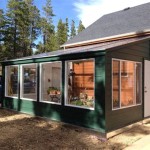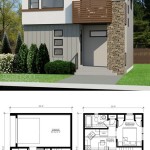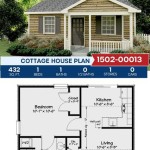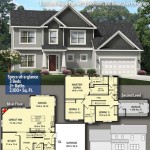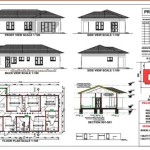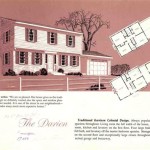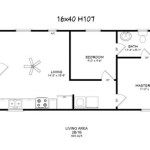A Comprehensive Guide to Barn Roof House Plans: Essential Aspects to Consider
Barn-style homes have gained immense popularity due to their unique charm, adaptability, and spaciousness. Whether you're looking for a cozy cabin retreat or a sprawling family residence, a barn roof house plan can provide the ideal framework for your dream home. Here's a comprehensive guide to help you understand the essential aspects of barn roof house plans.
1. Roof Shape and Pitch
The most characteristic feature of barn roof homes is their steeply pitched roof. This design allows for ample natural light and ventilation through large windows or skylights. The angle of the roof pitch is determined by factors such as climate, snow load, and aesthetic preferences. A higher pitch provides better drainage and resistance to snow accumulation, while a lower pitch offers a more traditional barn-like appearance.
2. Roof Structure
Barn roof structures typically consist of timber framing or engineered trusses. Timber framing involves using large wooden beams to create the framework, resulting in a visually appealing and durable structure. Engineered trusses, on the other hand, are prefabricated components that offer a quicker and more cost-effective solution. Both options provide structural stability and allow for open and spacious interiors.
3. Floor Plan Layout
Barn-style homes offer versatile floor plan layouts, catering to various living styles and space requirements. The open-plan design is a popular choice, featuring large, connected living areas that flow seamlessly into one another. Mezzanine levels or lofts can be incorporated to create additional living or sleeping space, adding height and architectural interest to the home.
4. Materials and Finishes
The exterior of barn roof homes often incorporates natural materials such as wood, stone, or metal. Wood siding and trim provide a rustic charm, while stone or brick facades offer durability and a classic look. Metal roofing is a practical option for its longevity and low maintenance requirements. Interior finishes may include exposed timber beams or reclaimed wood, creating a warm and inviting atmosphere.
5. Windows and Doors
Windows and doors play a crucial role in natural lighting and ventilation in barn roof homes. Large windows along the sides and roofline flood the interior with light. Sliding glass doors leading to outdoor decks or patios create a seamless indoor-outdoor connection. Opt for energy-efficient windows and doors to minimize heat loss and enhance comfort.
6. Site Considerations
The design of barn roof homes should take into account the surrounding environment and site conditions. Proper site planning ensures optimal solar orientation, maximizing natural light and reducing energy consumption. Consider the slope of the land and the potential for flooding or drainage issues. A well-thought-out landscape design can complement the architectural style and create a cohesive outdoor space.
7. Building Codes and Permits
Before embarking on the construction of your barn roof home, it is essential to familiarize yourself with local building codes and permit requirements. These regulations ensure the structural integrity and safety of your home. Obtain the necessary permits and work with experienced contractors to ensure compliance with all applicable codes.

24 36 Gambrel Barn Home Plan Timber Frame Hq

3 Bed House Plan With Gambrel Roof 890051ah Architectural Designs Plans

Http Www Bernardbuilding Com Packages 28x40 20gambrel 20house Jpg Gambrel Style Barn House Plans Farmhouse

Gambrel Roof House Plans Rustic Modern Barn Style America S Best Blog

2 Car Garage Apartment With 1 Bed Bath Farmhouse Floor Plans House Country Style

Barn Garage Plans Floor And Designs

15 House Plans With A Gambrel Roof

40 42 Monitor Barn House Plan Timber Frame Hq

Barndominium Plans Barn House Floor Houseplans Com

Modern Barn Home Floor Plan By Davis Frame Company

